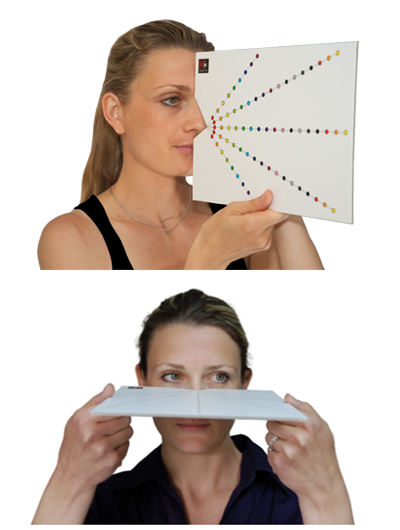The active eye board is a diagnostic tool to check whether the oculomotor muscles are performing well in terms of coordination and endurance and is also a working tool to improve these same disorders.
It helps to counter eye fatigue and ophthalmic migraines. These often occur in the evening or when there is little light.
The causes of an oculomotor deficiency :
If one eye is weaker than its neighbour, the brain's first reflex is to move that eye forward by rotating the head. If one eye is in hyperphoria (higher eye at rest), the head will tilt to ensure a horizontal gaze. The brain does its utmost to ensure a horizontal gaze. This is its first postural priority. The active eye board is used for the rehabilitation of the eye muscles, either horizontally or vertically, depending on the desired muscle work.
